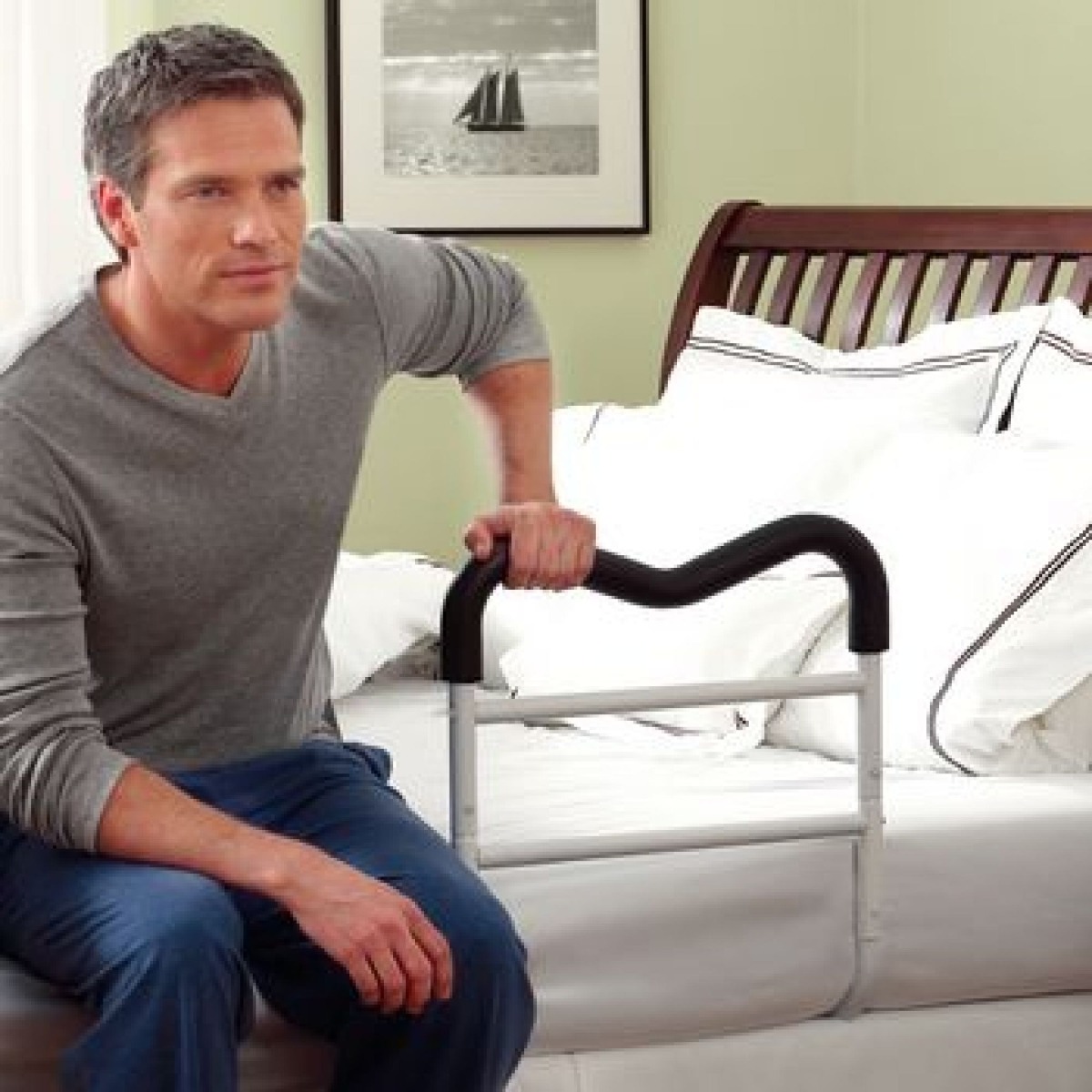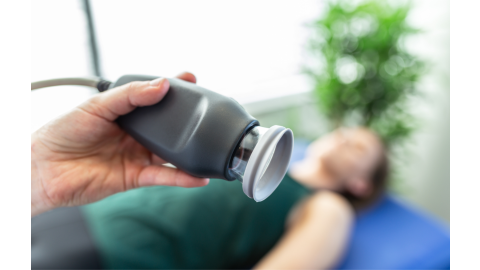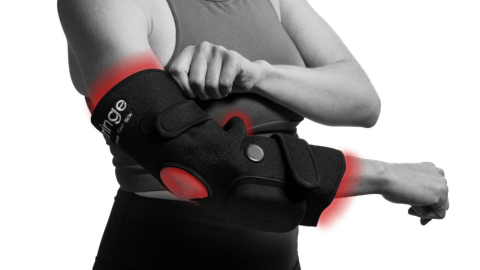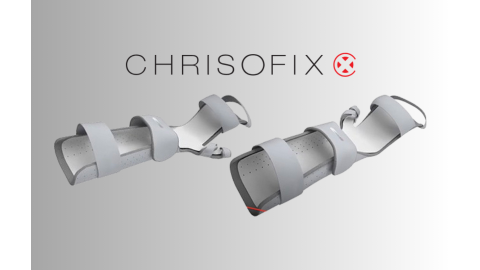Huntington’s disease (HD) can make it hard to transition from one position to another, such as from a wheelchair to the bed. Transfer aids make it easier for you to switch positions independently or with the help of a caregiver.
Depending on your symptoms, some of these aids will be more helpful than others. Your occupational therapist can help you choose the best options.
Transfer Aids and Tips for People with HD
Transferring from a Couch or Chair

- It is easier to sit and stand on surfaces that are firm. Adding a piece of dense foam under the chair or couch cushion can make it easier to stand while preserving the look of your furniture.
- A CouchCane offers sturdy support while you sit or stand from a couch or lift chair.
- Many people with HD lean backwards or to the side when sitting or standing from chairs. Using your hands on your thighs can help reduce your chance of falls. To sit, place your hands on your thighs and slide them to your knees as you sit. This keeps you leaning forward instead of backward. To stand, begin with your hands on your knees and slide them to your thighs as you stand. This puts your body over your feet and helps ensure a smooth movement as you stand.
- Some with HD tend to sit before they are close enough to the chair. Reach out and touch the chair with your hands or legs before sitting.
Getting In and Out of Bed



- Turning to get out of bed is easier on a firmer mattress. Cross one leg over the other (if you want to roll to the right, cross your left leg over your right and vice versa to turn the other way). Then use your arms to create rocking momentum, first side to side and then in the direction of your turn. If you have chorea of the arms, grab your elbows first before to the side to keep yourself and your caregiver safe.
- A bed rail assist offers a handle to hold onto when moving from a sitting to a standing position. It secures around your boxspring and bedframe and can also be used when getting into bed.
- If you’re transferring from a wheelchair into bed or from your bed into a wheelchair, a transfer board can help. One end is placed on the bed and the other on the wheelchair seat. You then scoot along the board to transfer with the help of a caregiver. The BeasyTrans Easy Transfer System is another option. It comes in three versions designed for car, bed, and bathroom transfers. The aid is similar to a transfer board but has a sliding disc that you sit on during transfers.
- A slide sheet can help move a person while in bed. You can create your own by folding a twin sheet in half lengthwise. Place the sheet so the person is lying on the sheet from lower shoulders to mid-thigh. To use, have one caregiver on each side of the bed. On the count of three, they can pull the sheet to move the person up, down, or to the side.
Getting In and Out of the Car


- A Swivel Seat makes it easier to get in and out of the car. To use, open the car door and stand close to the car frame with your back to the car. Sit down carefully. You can hold onto the doorframe, car handle, or an added assist handle. Then once you are sitting, swing your legs into the car. This is a safer option than balancing on one leg and stepping up into the car.
- If you have a caregiver, they can hold onto a gait belt to offer support during the transfer and place a hand over your head to protect it from the car’s door frame as you sit.
Transfers in the Bathroom

- Simplify transfers from your wheelchair to the toilet by using a specially shaped transfer board.
- A grab bar offers support as you get in and out of the shower or sit and stand from the toilet.
More Information
To learn more about transfer aids and how to choose the best option for you, talk to an occupation therapist or other medical professional.
Learn more about Huntington’s disease in these articles:
- Huntington's Disease Overview: Causes, Symptoms, & More
- The Best Dining Aids for People with Huntington’s Disease
- 8 Bathing & Dressing Aids for Huntington’s Disease
- Huntington’s Disease: Managing Contractures
- Huntington’s Disease: Mobility Aids for Every Stage
- Fall Prevention for People With Huntington's Disease
References
- Huntington’s Disease Society of America. (2016). A Caregiver Guide for HD Families. Retrieved from https://bit.ly/2yv2MbB
- European Huntington’s Disease Network. (2012). Occupational Therapy for People with Huntington’s Disease: Best Practice Guidelines. Retrieved from https://bit.ly/2wdB4PS
Medical Disclaimer: The information provided on this site, including text, graphics, images and other material, are for informational purposes only and are not intended to substitute for professional medical advice, diagnosis or treatment. Always seek the advice of your physician or other healthcare professional with any questions or concerns you may have regarding your condition.








 France
France Australia
Australia






